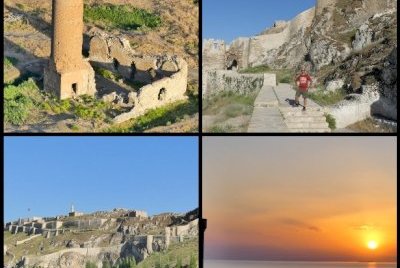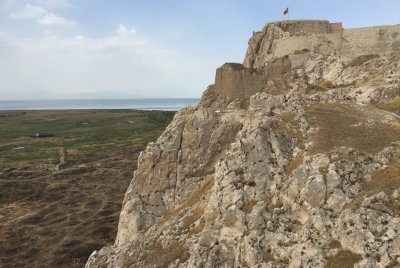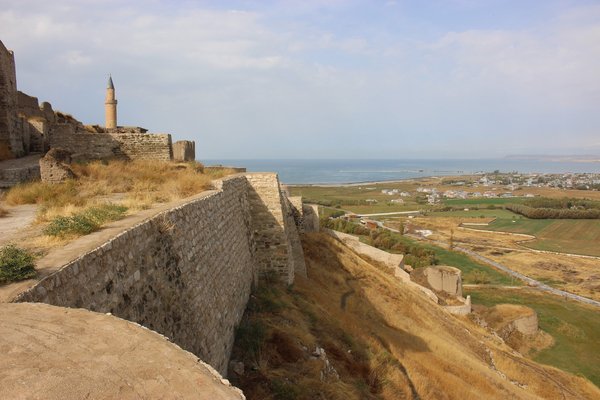Turkiye
Tushpa/Van Fortress
Tushpa was the capital city of the Urartians (the Kingdom of Van in present Eastern Anatolia) from the 9th century BC to the 6th century BC. The early settlement was centered on the steep-sided bluff now known as Van Castle. Here have been found Urartian cuneiform inscriptions dating to the 8th and 7th centuries BC. The Old City of Van lies to the south of Van Fortress and was inhabited from the thirteenth to the twentieth century.
Site Info
Official Information
- Full Name
- Tushpa/Van Fortress, the Mound and the Old City of Van (ID: 6114)
- Country
- Turkiye
- Status
-
On tentative list 2016
Site history
History of Tushpa/Van Fortress
- 2016: Added to Tentative List
- Added to tentative list
- Type
- Cultural
- Criteria
Links
- UNESCO
- whc.unesco.org
All Links
UNESCO.org
- whc.unesco.org — whc.unesco.org
Community Information
- Community Category
- Secular structure: Military and Fortifications
Travel Information
Recent Connections
News
No news.
Community Reviews
Show full reviews
I visited this tentative WHS in Spring 2021. Having already visited the Diyarbakir WHS and Sanliurfa tWHS, I wasn't really expecting much of the Van Fortress. Yet just after we drove past the really big albeit closed museum of Van, we were surprised by the sheer size of the impressive fortress also known as Van Citadel, and we decided to drive through some side streets further away to see the whole fortress from afar before climbing to the top and exploring the mound and other components of this tWHS.
The fortifications were built by the ancient kingdom of Urartu during the 9th to 7th centuries BC, overlooking the ancient ruins of Tushpa, the Urartian capital during the 9th century. The lower parts of the walls of the Van Citadel were constructed using basalt without mortar, while the rest was built using mud bricks. Successive groups such as the Medes, Achaemenids, Armenians, Parthians, Romans, Sassanid Persians, Byzantines, Arabs, Seljuks, Safavids, Afsharids, Ottomans and Russians each controlled the fortress at one time or another. Similar fortifications were built throughout the Urartian kingdom, usually cut into hillsides and outcrops in places where modern-day Armenia, Turkey and Iran meet. The Van Citadel is supposed to be one of the largest and most representative of such fortresses which were used for regional control, rather than as a defense system against foreign armies.
An important trilingual inscription of Xerxes the Great from the 5th century BC is inscribed upon a smoothed section of the …
Keep reading 0 comments
Tushpa/Van Fortress (Van Kelasi in Turkish) and the Old City of Van is a site is located in the city of Van, which is easily reached by cheap domestic flights from Istanbul. It in the western outskirts of the city, near the lakeshore, visible from far away. Entrance to the site is on its western end, which is inconvenient if walking from Van city. Entrance fee is 6 TL. The site can also be entered from the East, but necessitates jumping above a small wall, and walking uphill.
Tushpa was the capital city of Urartian Kingdom, from the ninth to the sixth centuries BC. The kingdom was centered around Lake Van and built the first fortress on a high conglomerate mound about 100 meters high and 1.4 km long on the southern shore of Lake Van. It was a very fertile region and was occupied front Early Bronze Age. Successive states (Armenian, Romans, Sassanid, Byzantines, Arab, Seldjuk, Ottoman, Russian) built and rebuilt fortresses of top of its predecessor. Nowadays, foundations, walls, fortifications, tombs and buildings of those different ages mix with one another, including 10-meters high Ottoman fortifications (top of my picture) and older mud-and-stone-bricked fortification from the Uratian time (just below on the left of my picture).
From the top of fortress hill, the view is great on the lake, on the modern city of Van, and its surrounding mountains, and, down below, on the ruins of the razed-to-the ground Old City of Van.
The Old …
Keep reading 0 comments
